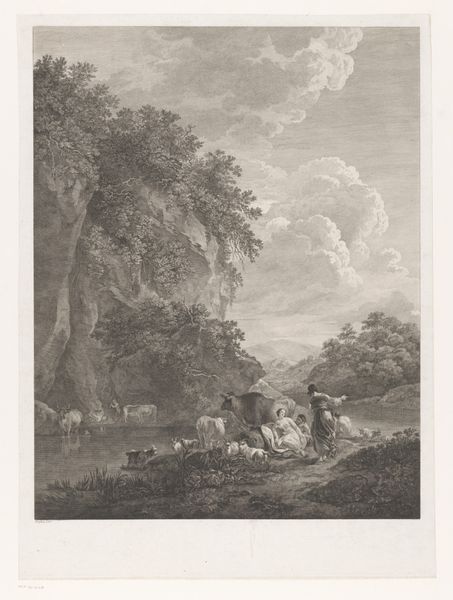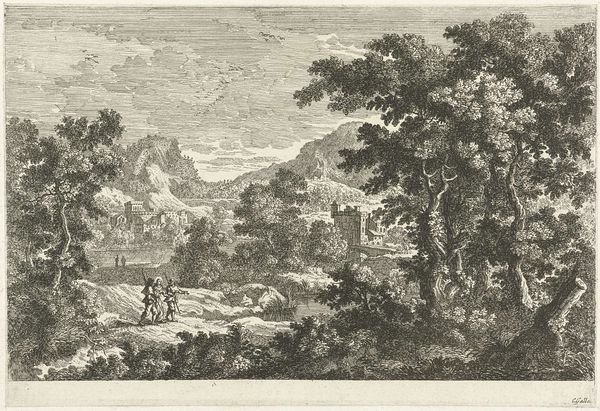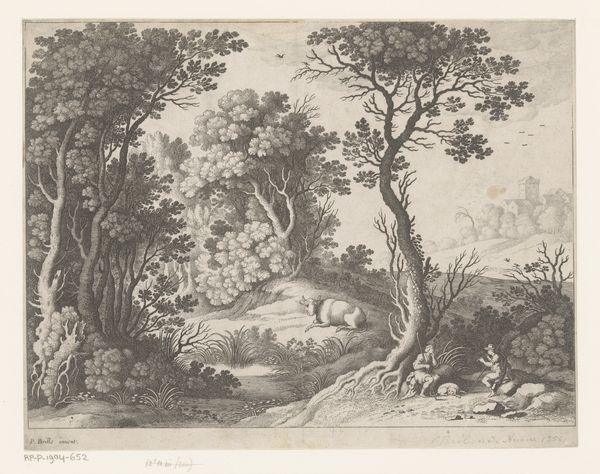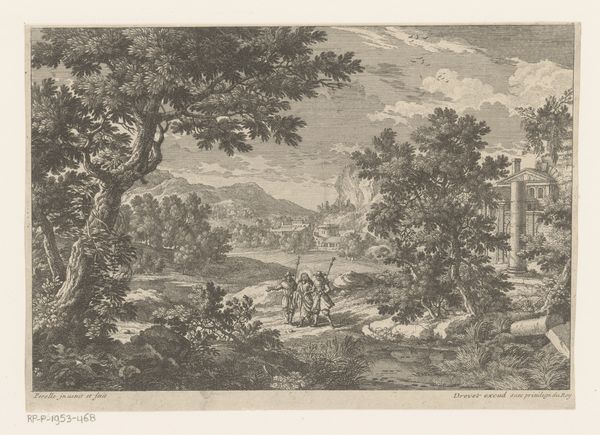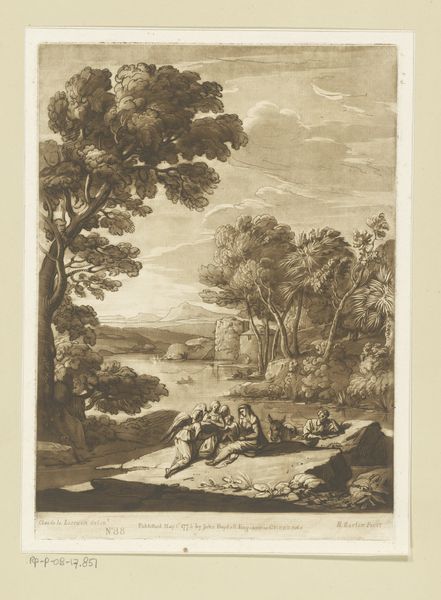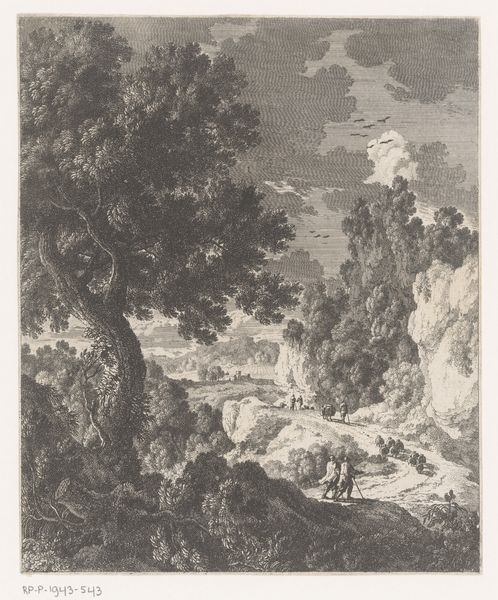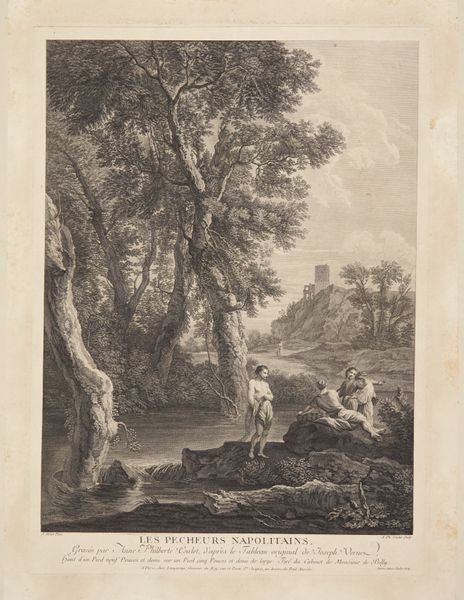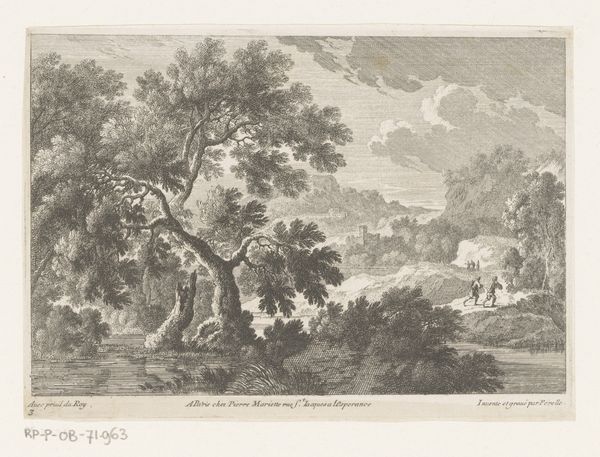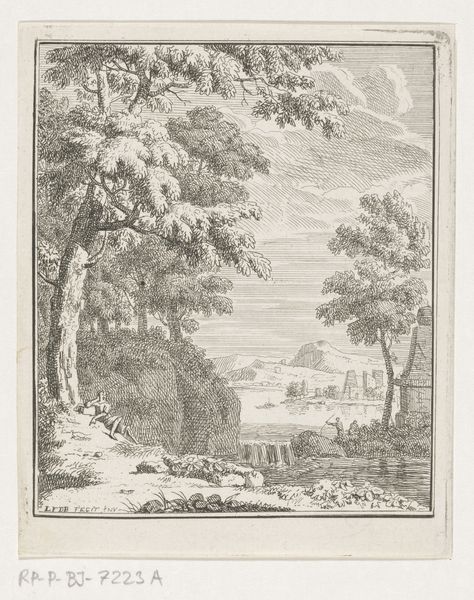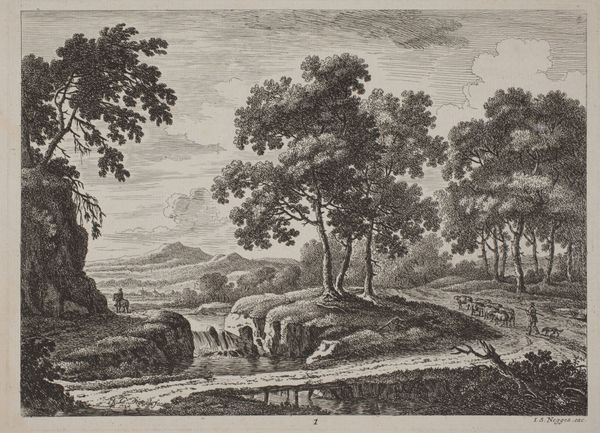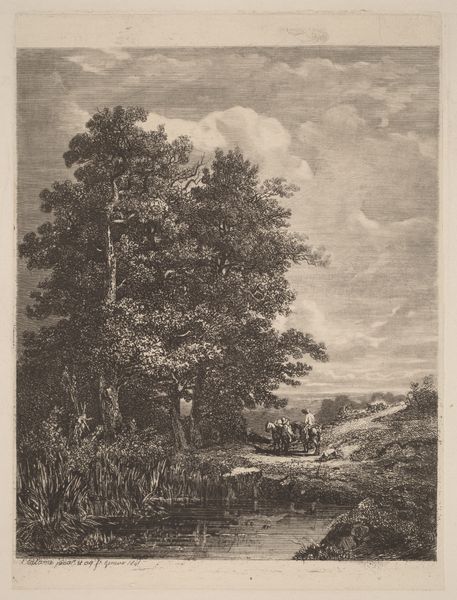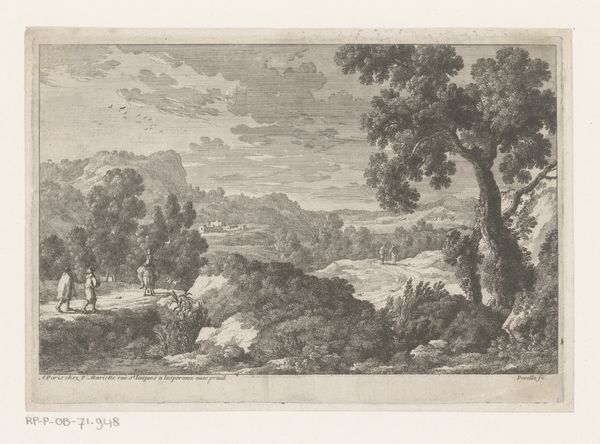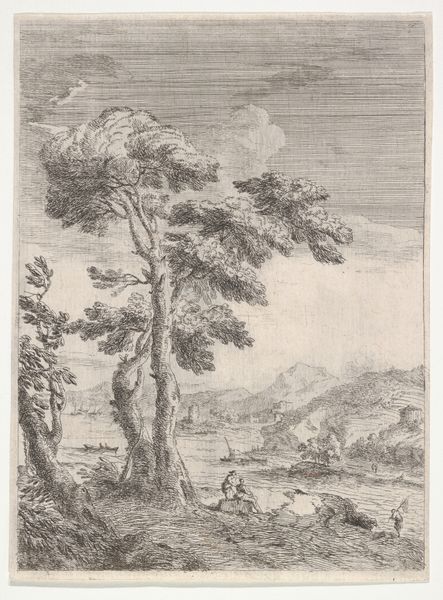
print, engraving
#
baroque
# print
#
old engraving style
#
landscape
#
line
#
engraving
Dimensions: height 216 mm, width 183 mm
Copyright: Rijks Museum: Open Domain
Nicolas Perelle created this landscape scene using etching, a printmaking technique, sometime in the 17th century. The image is made by drawing through a waxy, acid-resistant ground on a metal plate, then immersing the plate in acid. The acid bites into the metal where the ground has been removed, creating an image that can then be inked and printed. The lines in this print are characteristic of the etching process, with a delicacy and precision that's quite remarkable. Think about the labor involved: the skilled hand of the artist, the careful application of the ground, the precise timing of the acid bath, and the physical act of printing. In its own way, this print is a product of its time, a reflection of the growing commercialization of art. It makes you think about the relationship between art, labor, and the market, and how even a seemingly simple image can be loaded with social and economic meaning. It's a great reminder that art is never just about aesthetics; it's always about the human beings who make it, and the world they live in.
Comments
No comments
Be the first to comment and join the conversation on the ultimate creative platform.
